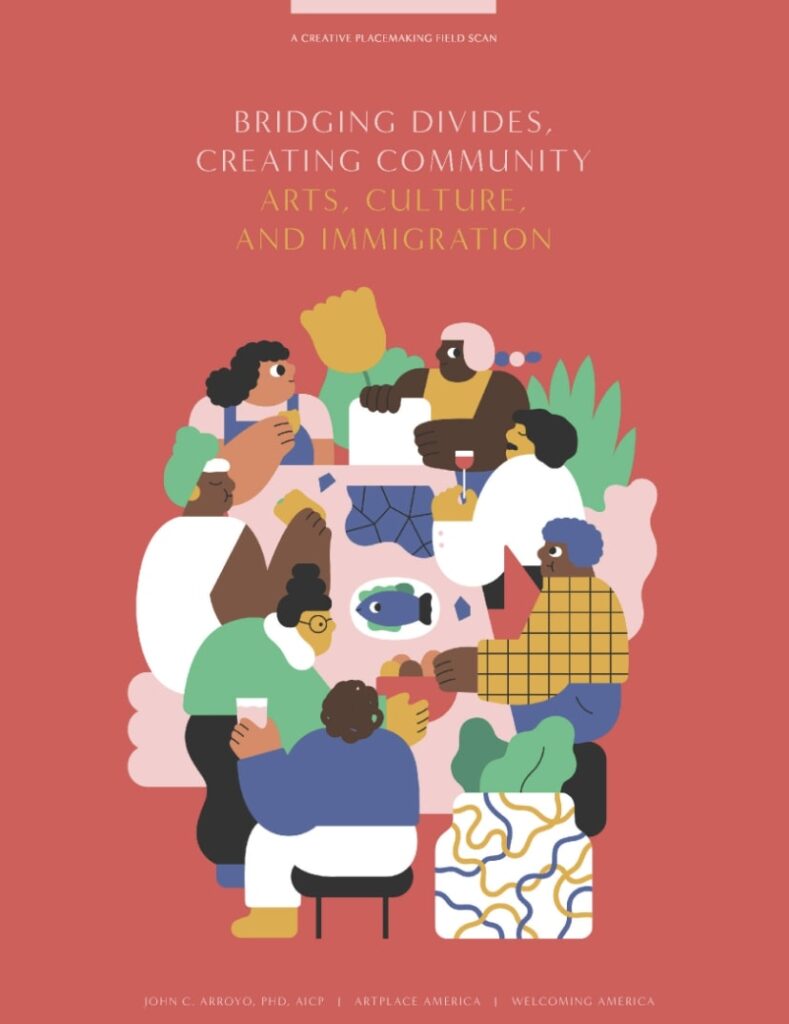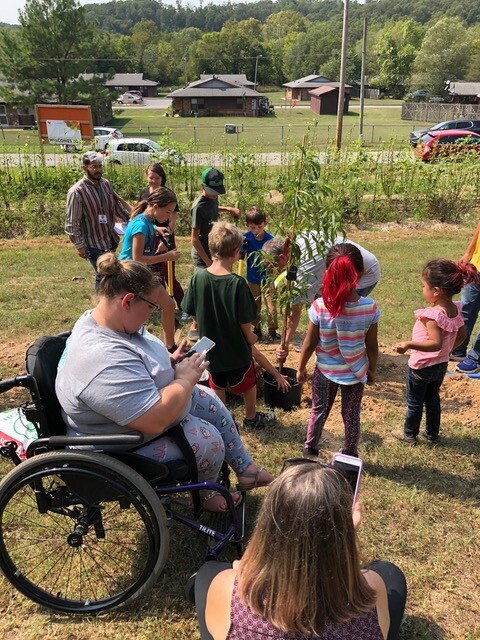“Of all the forces shaping politics and power around the world, perhaps none are more important than our sense of who we are, and who we are becoming.” says internationally recognized civil liberties expert john a. powell.
After more than a decade of work in the field of welcoming and belonging, Welcoming America knows that all of us have an important role to play in shaping our future “we.” We’ve seen how communities are made stronger, more resilient, and innovative when we build bridges of belonging instead of walls of othering.
This article will provide some guiding principles and ideas to start engaging in belonging work, particularly as it relates to immigrants, refugees, and newcomers. It will also help provide a myriad of resources to help deepen your understanding of just what belonging means.
We hope this tool can help contribute to your work, and that it can add to the ever-growing ways that people are combating exclusion and othering through belonging and equity.
Part of Filling the Well
What does it mean to be a truly welcoming organization and how can arts leaders be more inclusive hosts who foster belonging? Dig into a discussion with two artists who regularly tackle these questions, Ananya Chatterjea and Marcus Young. This article is connected to Episode 3 of Filling the Well, an Arts Midwest podcast created to nourish, provoke, and inspire artists and arts leaders. After the episode, go deeper and explore tangible tools to apply in your own spaces.

Understanding Belonging and Welcoming
-
What is welcoming in relation to belonging?
For newcomers, belonging is the manifestation of truly welcoming infrastructure and intentional bridge building work across differences. Being welcoming is much more than being friendly, tolerant, or peaceful. We believe that truly welcoming places have intentional, inclusive policies, practices, and norms that enable all residents to live, thrive, and contribute fully.
Welcoming places are made possible by welcoming people and leaders, including immigrants themselves. Whether you’re a student, librarian, government worker, artist or business owner, each of us is empowered to foster more welcoming places at work, in our neighborhoods, and places of gathering. Together, this creates secure belonging in our workplaces and local communities.
-
Why does belonging and welcoming matter?
Being welcoming and creating a sense of belonging can be a challenge when communities undergo significant changes, but especially with demographic change. Whether it’s due to the economy, immigration policies, or climate disasters, communities experiencing an influx of newcomers may not be prepared, causing misunderstanding and tension, and in some cases, outright violence and hostility.
But when communities recognize the value of being truly welcoming and intentionally work toward the inclusion of newcomers, they can create a culture and policy environment where all residents feel empowered to work with each other in strengthening the social, civic, and economic fabric.
When we find strength in our diversity — and actively resist fear and division — we can build a resilient community that fully harnesses the talents, skills, and contributions of every resident so that all can thrive.
-
How can my organization be more prepared to engage in belonging and welcoming work?
A key aspect of this work is to continuously work internally to prepare and live up to the values and core principles of belonging. Organizational leaders can equip themselves and their staff to be more effective once you are ready to engage the broader community and execute programmatic objectives. Below are some internal organizing tools and resources to help create that internal foundation on belonging within your organization.
Building a Sense of Belonging in the Workplace
HR speaker Eric Termuende says that when discussing diversity in the workplace, we also need to be pairing that with a sense of belonging. How do you build that? Eric recommends three steps in this video
Belonging and Happiness at Work
There are three billion working people on this planet, and only 40 percent of them report being happy at work. Michael C. Bush shares his insights into what makes workers unhappy — and how companies can benefit their bottom lines by fostering satisfaction.
Psychological Safety: Fostering a Sense of Belonging
To build inclusive teams, it is important to invite different perspectives and create safe spaces where we all feel a sense of belonging and empowered to contribute to our teams. Watch this video for tips on how to create psychologically safe teams where everyone can thrive and succeed.
How can arts organizations get involved in welcoming and belonging work?
As highlighted before, we all have a role to play in creating truly welcoming and inclusive communities. Arts organizations are an integral part of this work. Since the very beginning, Welcoming America has looked at arts and cultural institutions as drivers and facilitators of belonging work.
Bridging Divides & Creating Community Toolkit
In this toolkit for arts and culture organizations, we lay out four clear strategies, along with case studies, about how to engage in welcoming and belonging work. Read on to learn more about how to bridge newcomer and longer-term populations, elevate cultural traditions as assets, engage newcomers and other allies in civic processes, and co-create spaces that reflect identity.

Explore Welcoming Week Resources
For organizations just beginning their work in this space, we encourage you to look at our Welcoming Week resources. Through Welcoming Week, organizations and communities bring together neighbors of all backgrounds to build strong connections and affirm the importance of welcoming and inclusive places in achieving collective prosperity.

Learn More about the Welcoming Network
For organizations looking to deepen and utilize their role in the community to advance welcoming policies, you can look at becoming a member of our Welcoming Network, doing a deep dive of our Welcoming Standard, and/or creating a plan for your local government to become Certified Welcoming.

A core tenet of our work at Welcoming America is to meet communities and organizations where they are. We hope these tools can help in your organization’s journey of belonging and welcoming, whether as an internal organizing strategy to help your team be as informed and prepared on this topic or as a catalyst to start co-creating programs and advocacy initiatives that help advance belonging in your local community.
Learn More
-
Bridging – Towards A Society Built on Belonging
Watch an explainer video from the Berkley Othering and Belonging Institute that gives a high-level snapshot of “bridging” and “breaking” as possible responses in our current times. Then, dive into curriculum based on this concept: a 30-minute workshop, a 60-minute trainer module, and a 90-minute deeper dive.
-
Tips and Tools for Integrating Arts, Culture, and Immigration
In communities where arts institutions also play a role in welcoming, organizations reap the benefits of inclusion as they attract more diverse audiences, reflect their changing communities, and make communities more vibrant. The Tips and Tools for Integrating Arts, Culture, and Immigration guide offers up best practices for artists and culture makers looking to foster more welcoming communities.
-
Taste of Belonging: A Collection of Ways to Strengthen Community Across Difference
Welcoming America created the Taste of Belonging: A Collection of Ways to Strengthen Community Across Difference cookbook as a tool for meaningful connection across differences. If you’re looking to build community and reduce prejudice in your own locality, first share this cookbook with a friend, colleague, grandparent, sibling, or neighbor. Then, try one of the intergroup bridging models in your own community and find ways for the group to offer their own recipes from near and far.
